Over the last few years, the Derby Della Madonnina has once again become a spectacle, with the game’s impact strongly affecting the landscape of Serie A due to the resurgence of both teams. This is once again the case at this early stage of the Serie A season, with both teams sitting on 9 points, with Inter at the top of the league and Milan in second on goal difference.
Both teams have found their attacking form relatively quickly, with both sides scoring eight goals in the opening three games. However, unlike Milan, Inter have yet to concede a goal, despite the exits of key players such as Milan Škriniar and Marcelo Brozović. Towards the end of last season, Inter managed to breeze past Milan in the semi-final of the UEFA Champions League. With their new additions this summer, Milan have made a few tweaks to their game model, making them even more challenging to play against.
This tactical analysis in the form of a tactical preview will analyse Milan’s tactics in attack, how these have caused problems for opposing teams at the start of the season, and how Inter may look to press against and mitigate Milan’s attacking threat this weekend.
The fluid movement of Milan
Although losing prominent members of the side, such as Sandro Tonali and Brahim Díaz, Milan have managed to strengthen well this season, recruiting Ruben Loftus-Cheek and Christian Pulisic from Chelsea as well as Tijjani Reijnders from AZ Alkmaar just to name a few. The undeniable strength of this Milan side lies in the ball-carrying ability of some of their players, such as Théo Hernández and Rafael Leão, with Loftus-Cheek also providing additional threat from a ball-carrying perspective.
Due to this, Milan have become adept at creating space for one another, allowing the side ball carriers to run into and exploit spaces with or without the ball. Milan are able to create these spaces in a variety of ways, with one of these being their fluid movement, particularly in the first few phases of build-up, with this being one of the most fascinating aspects of their style of play this season.
Milan, under Stefano Pioli, have used a back three to build up on several occasions. Still, this season, what has stood out is the flexibility of the back 3, with different players dropping into the defensive line depending on the situation at hand and whether there is the space to do so.
At times, Théo, the left-back, can adopt a relatively deeper position and become a part of the back three. Davide Calabria is mostly inverting into the midfield to form a double pivot with Rade Krunić.
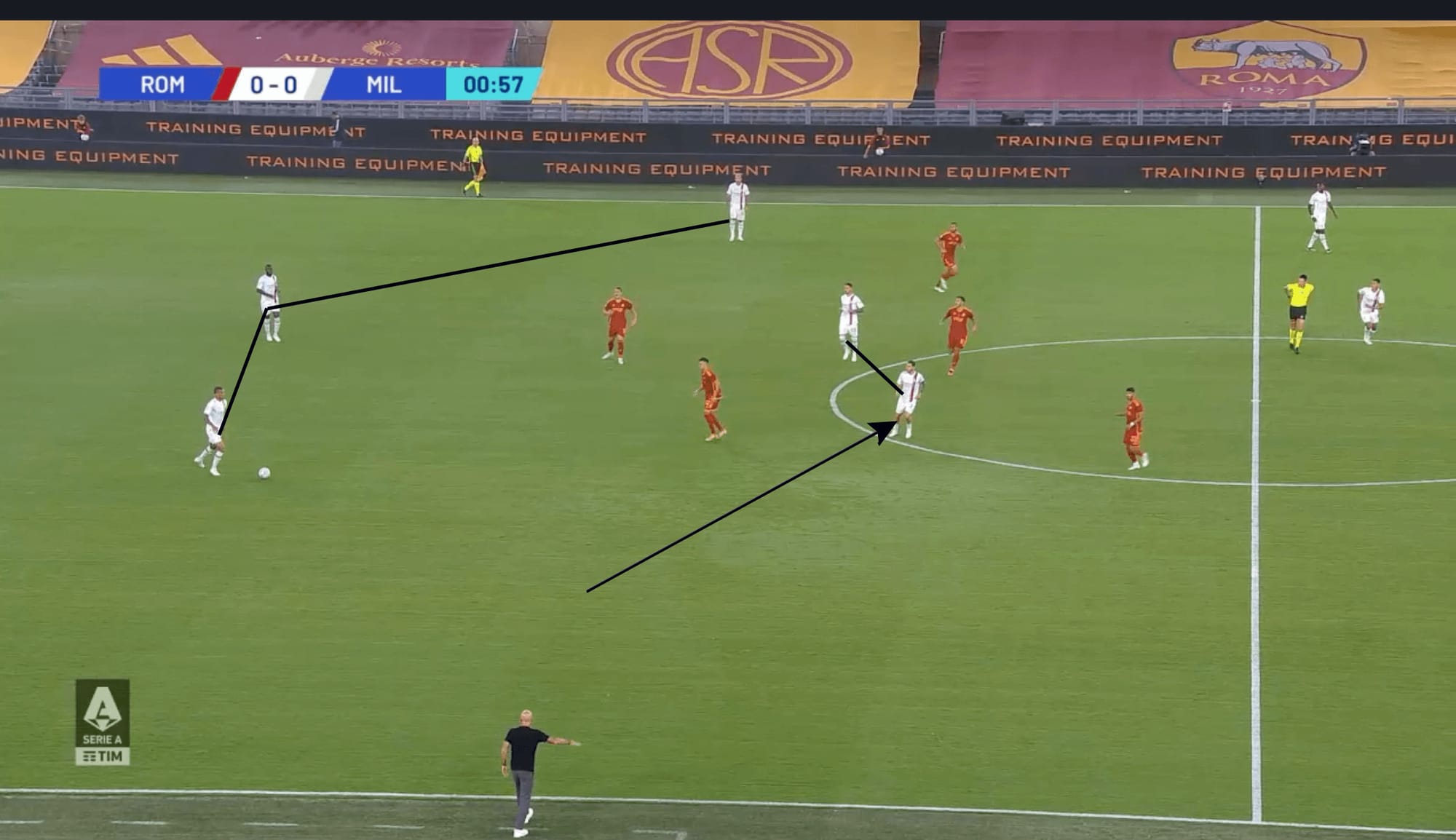
Krunić and Calabria’s midfield positions do not prevent them from dropping into the back line; at some points, Reijnders even drops deeper into the back three from advanced midfield positions. From the opposition perspective, this flexibility in movement creates many question marks over who is meant to cover which player. In this instance, Andrea Belotti initially covers Krunić, but as a pass is played backwards, he begins to advance further forward.
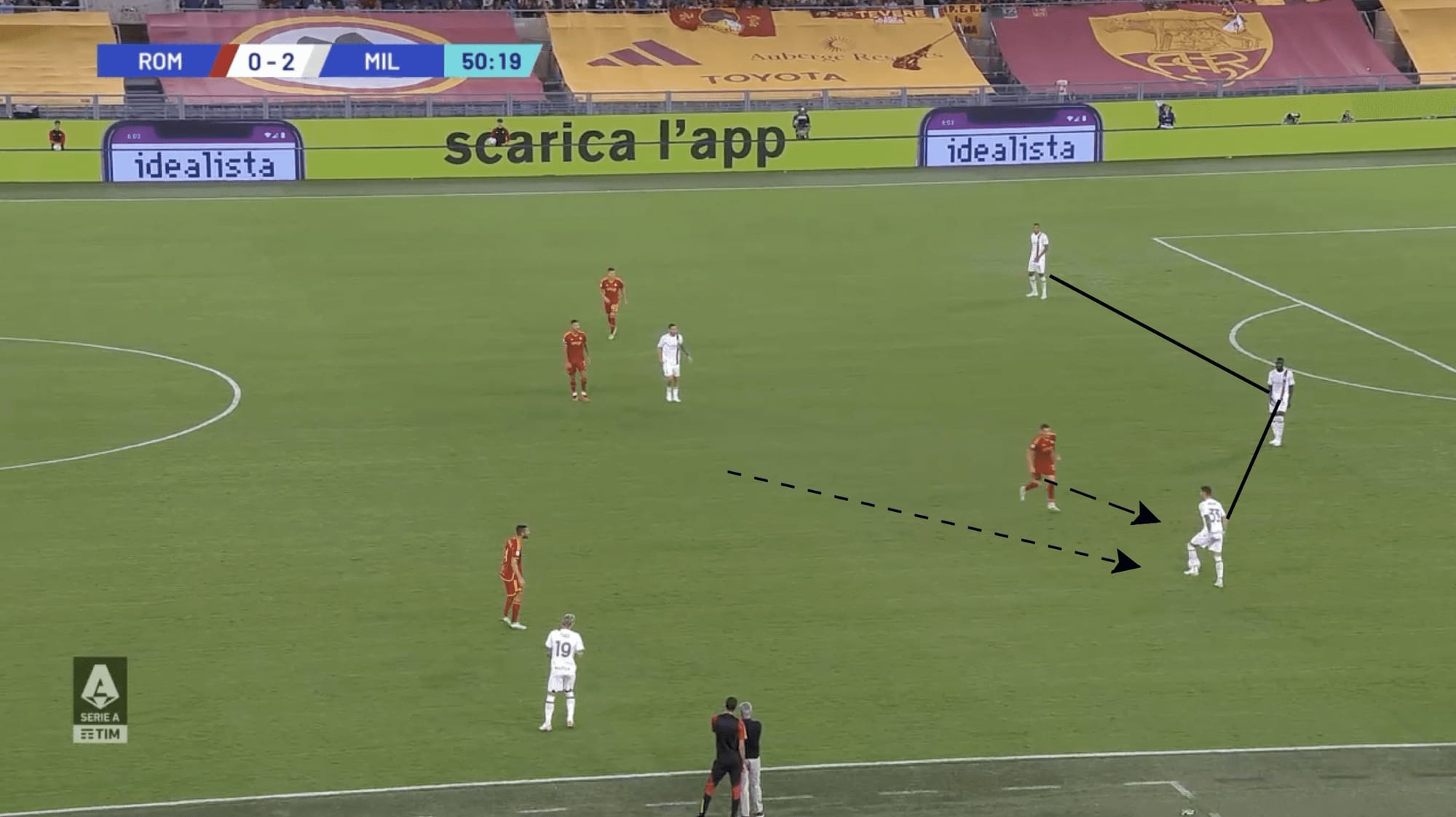
As the pass is played back to the Croatian, the opposition midfielder faces a 2v1 situation with Belotti in a position that does not allow him to assist his teammate. Reijnders then moves nicely to lose his marker and drop into the midfielder space vacated by Krunić to support and combine with Théo and play through Roma.
Different players dropping into the back three gives Milan opportunities to lose their markers and create space for one another. Milan players are particularly astute at moving into these spaces and creating excellent angles of support that allow them to play through 3v3s, 3v2s and other matchups in the wide areas.
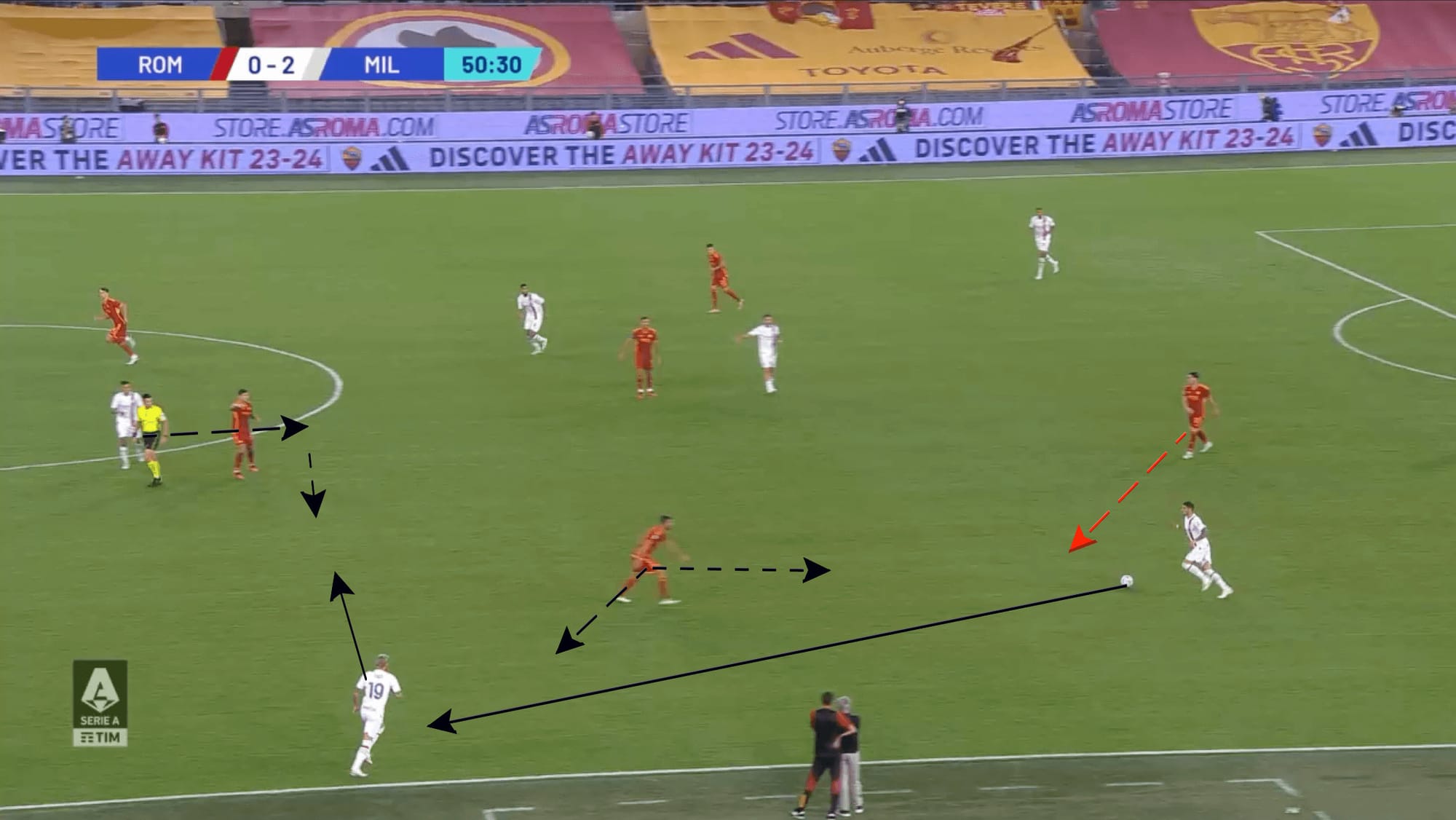
Part of the reason that Roma struggled in applying meaningful pressure against Milan was because of their flexible movement and the fact that their front two did very little to support their midfielders behind them. The image below once again provides an example of the good angles of support created by Milan.
Compared to the last example, Théo now takes up a deeper position in the back three, with Leão now dropping slightly deeper and Krunić supporting from the midfield. Although Milan’s players have taken up good positions, they can progress the ball because Belotti does not drop deeper to cover Krunić whilst his teammate presses Théo.
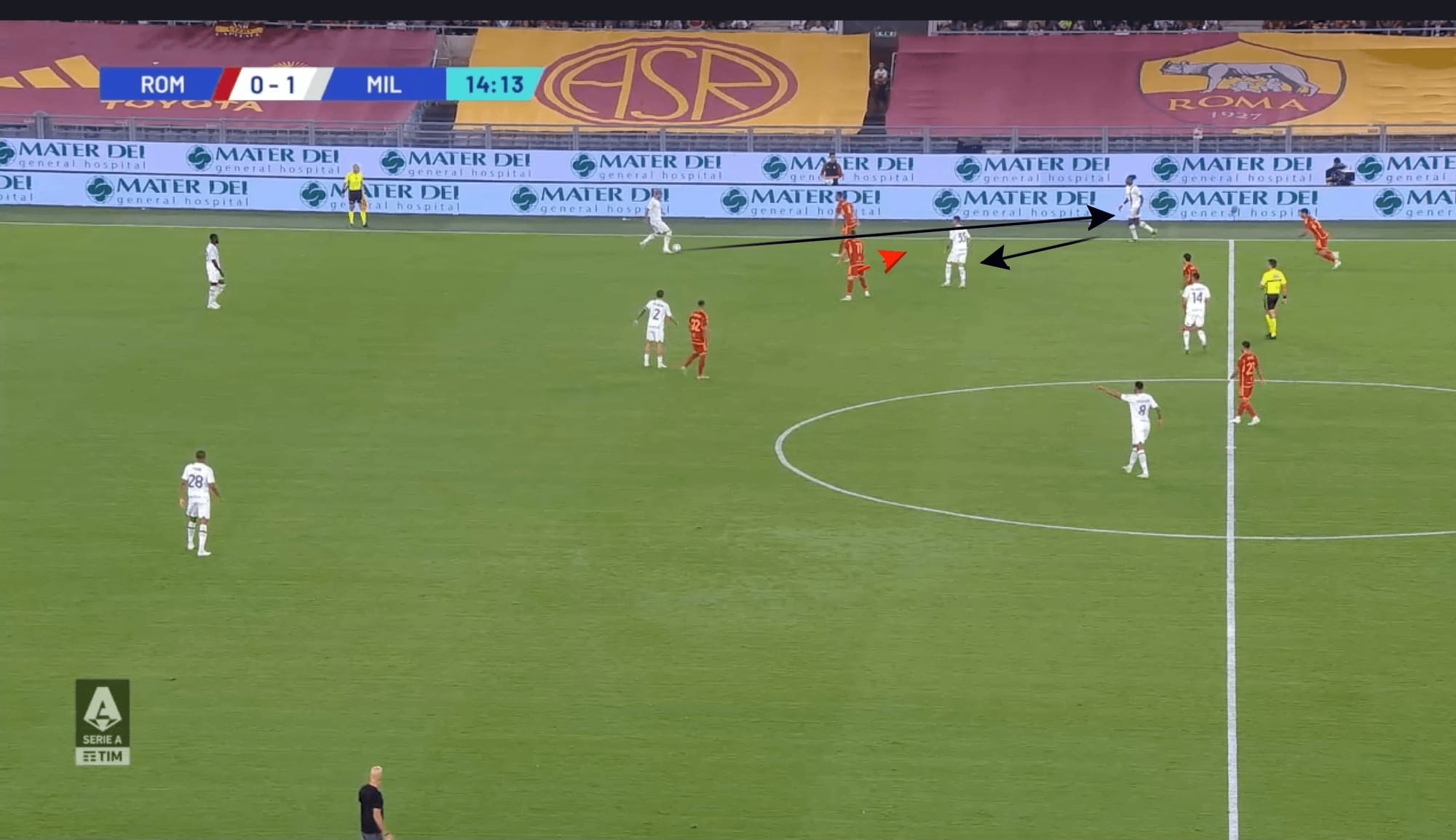
The strikers in a side must be able to drop deeper and cover and support players pressing Milan players in the back three or Théo as it either reduces space for supporting players or reduces space for carries. With Théo receiving the ball from Krunić, who has dropped into the back 3, Bryan Cristante begins to press the left-back. Belotti moves towards Krunić instead of shifting to his right to reduce space between the first and second lines. This gives Théo ample space to carry the ball.
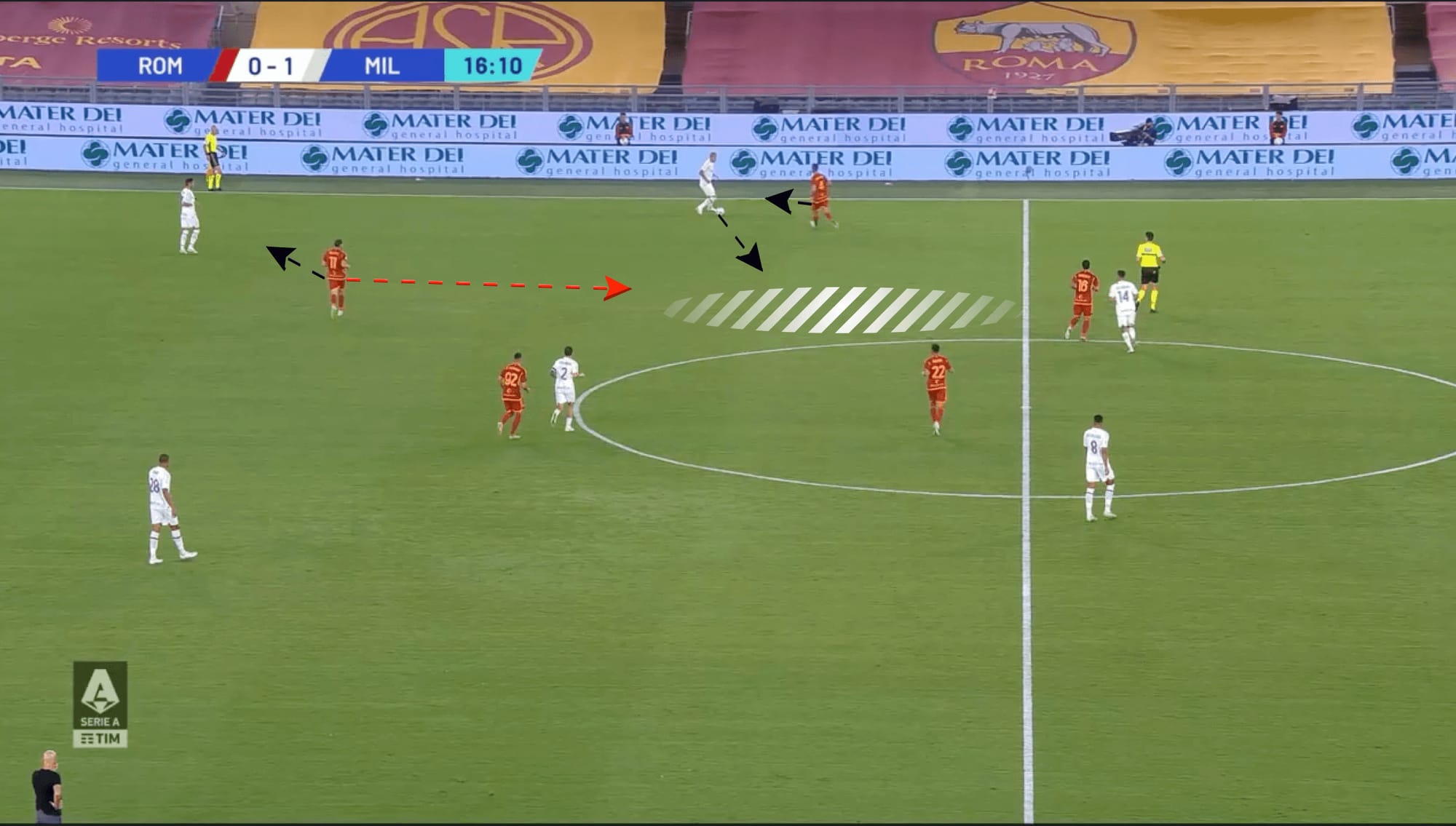
These carries are dangerous as they attract other opposition players, allowing Milan players ahead of the ball to receive it in space.
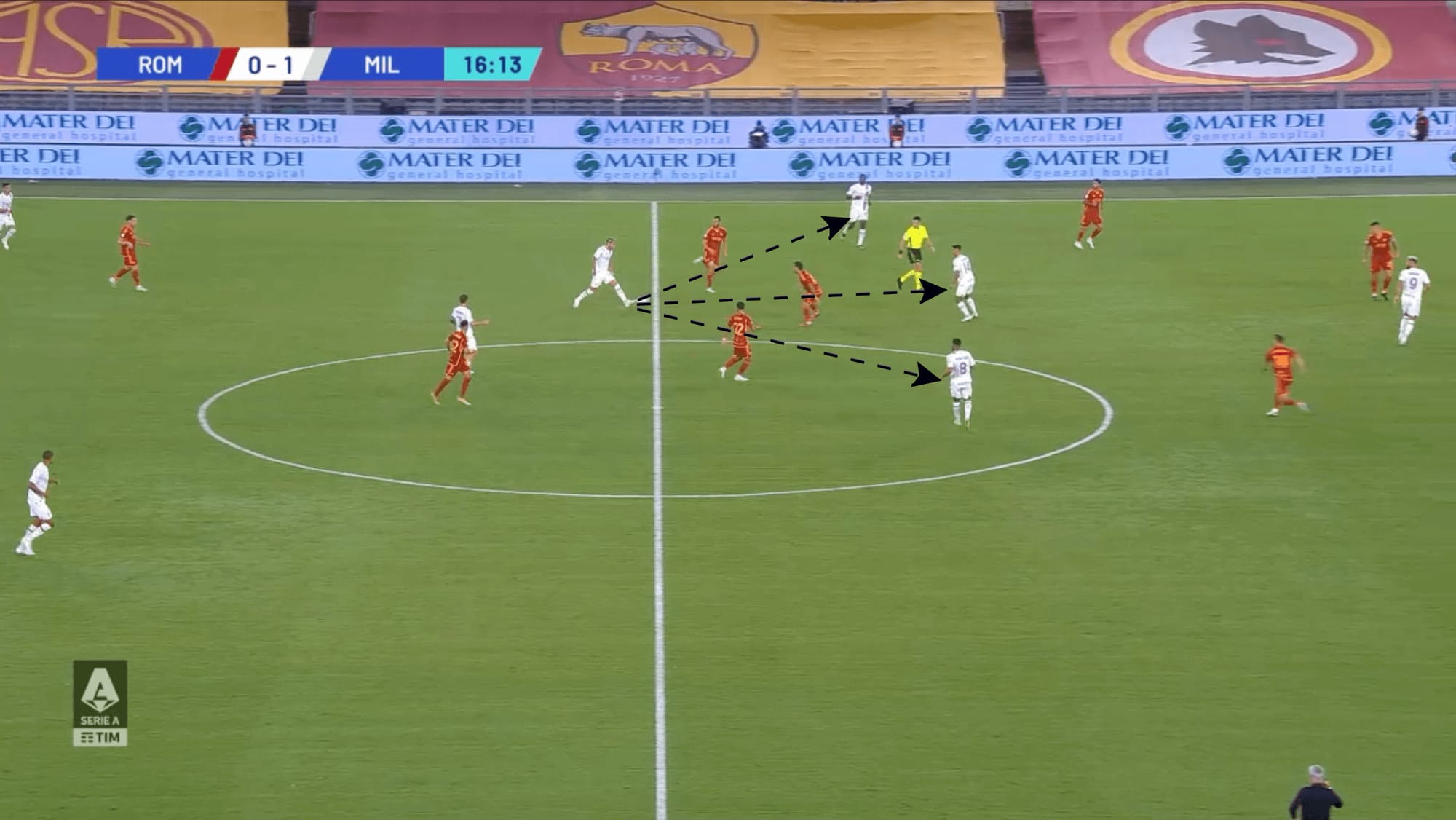
An additional threat of this Milan side is the number of players occupying central spaces on the pitch, with the side having five players in central zones. This once again stresses the importance of strikers needing to be actively involved in covering for pressing midfielders.
What is also a cause for concern is the positions that Loftus-Cheek takes up at times, with the Englishman taking up unmarked positions in the centre on the ball’s far side and half-space.
Even as other Milan midfielders move towards the ball carrier in order to offer support, Loftus-Cheek holds his position, giving him space to drive forward with the ball if there is a quick switch in possession.
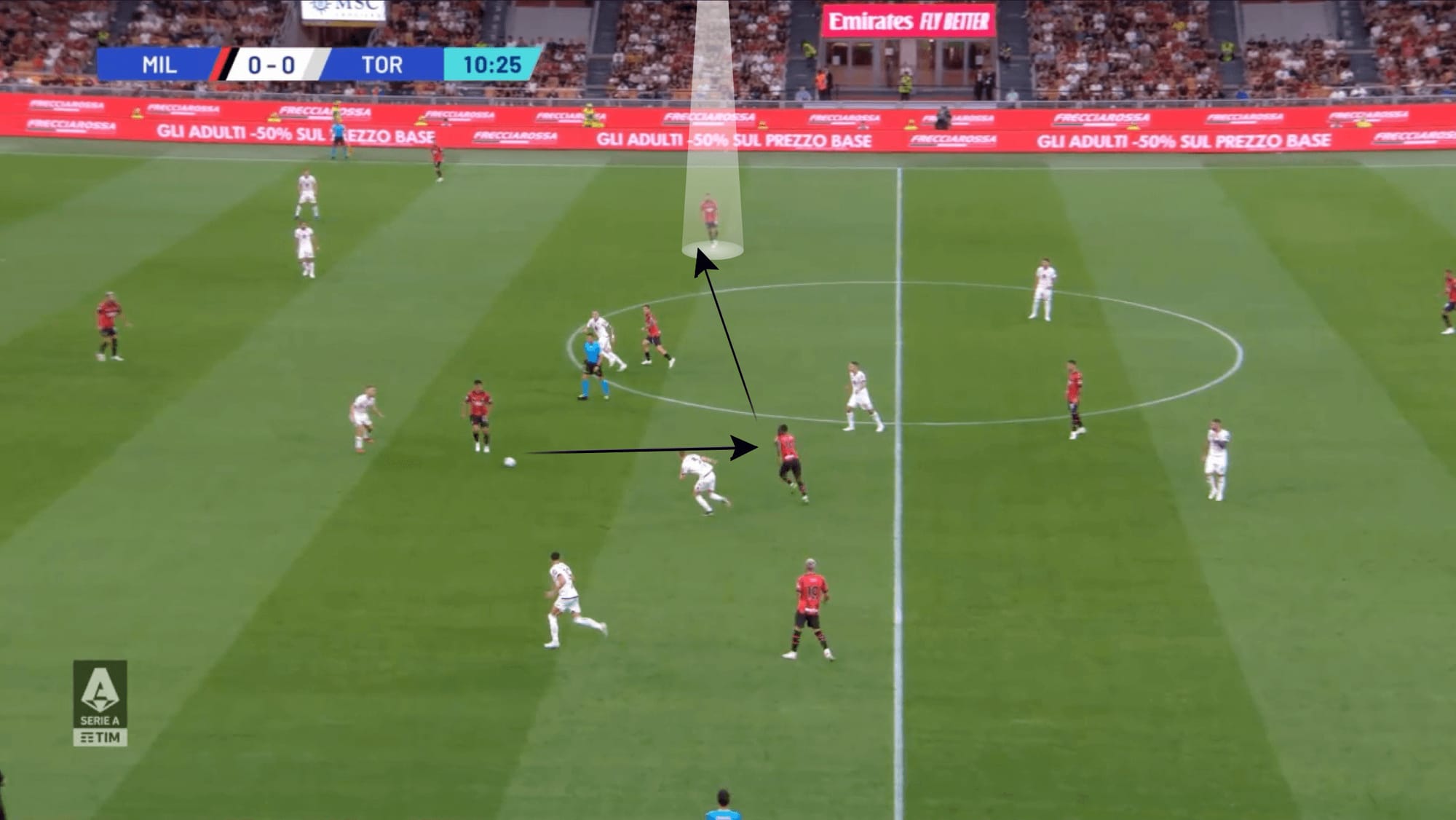
Milan’s flexibility and creation of space and angles of support are balanced with the speed of their attacks. In their game against Roma, due to the number of players that Milan had in central zones, Roma’s centre-backs would step up to cover these players, exacerbated by Giroud often dropping deeper. Milan look to attack these spaces with runs from deep by players such as Théo and Loftus-Cheek or players in the front line such as Leão.
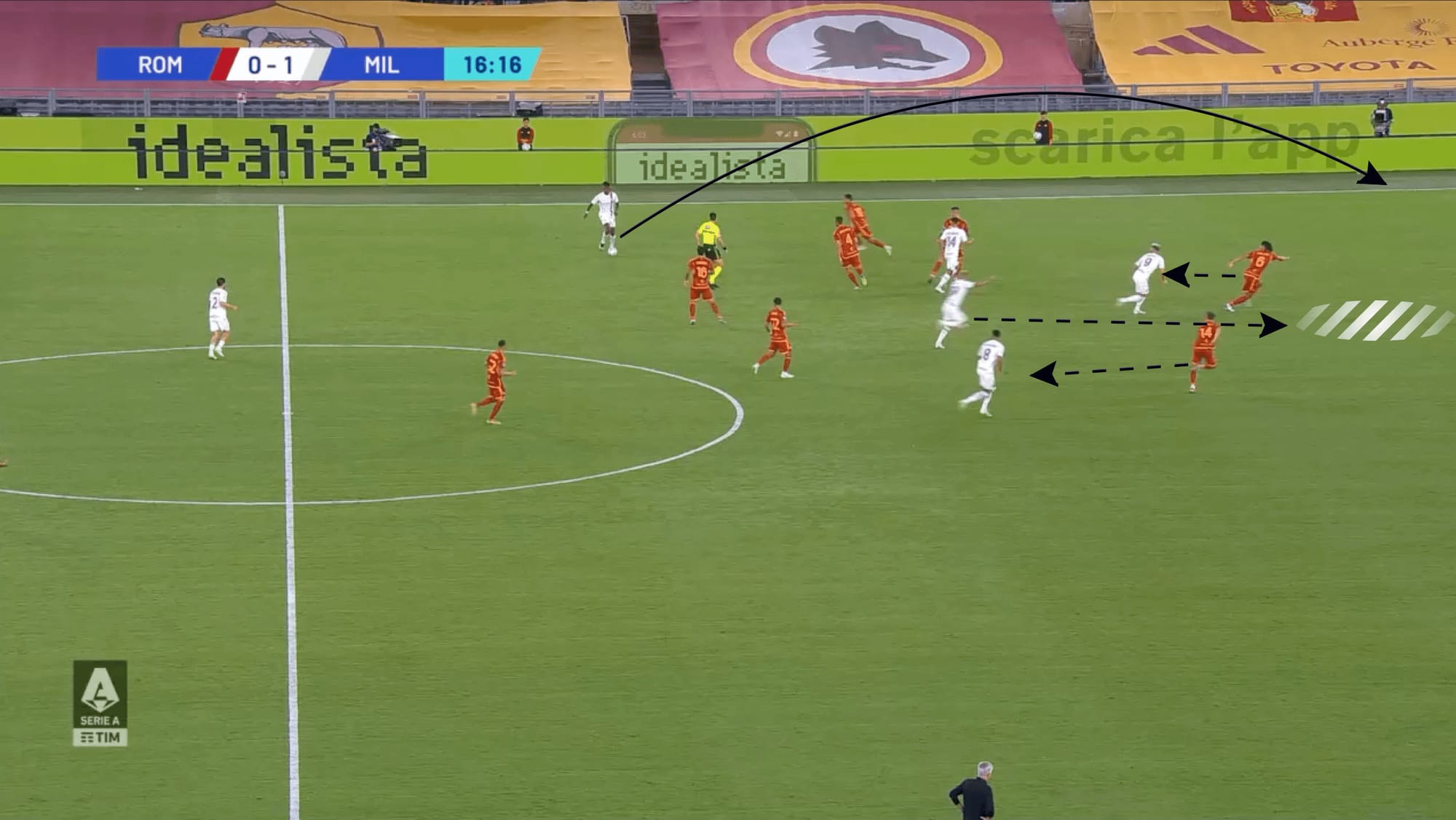
In their game against Torino, Milan struggled to progress the ball as frequently as they could against Rom. Torino’s man-marking approach gave Milan players limited time to receive the ball. Torino’s approach also worked well against the flexible movement of Milan players as there was more certainty over whom each of their players were meant to cover.
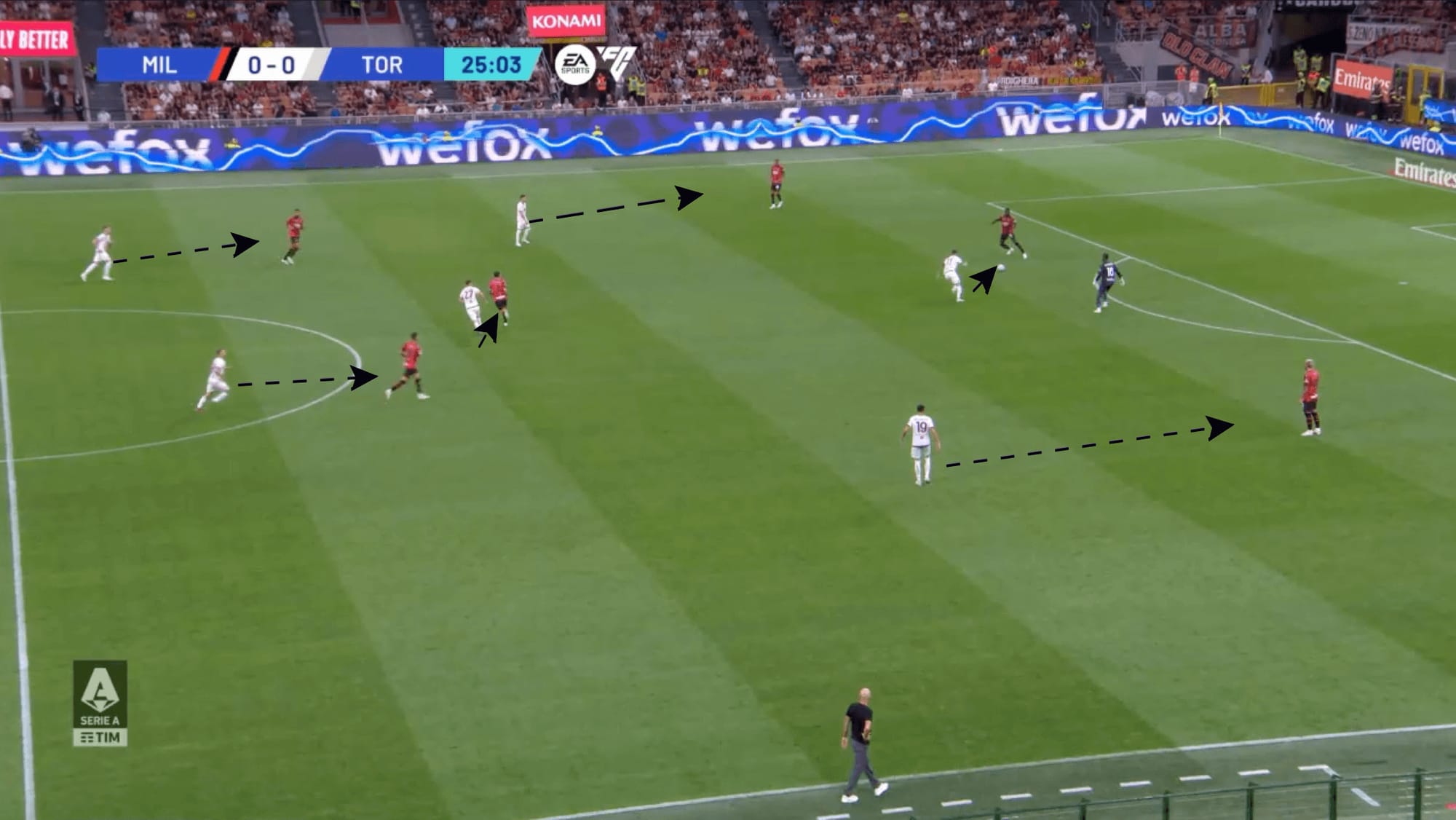
However, as is the case with man-marking, space for receiving may be reduced, but in certain situations, space for carries may still be possible if players move away from the ball carrier.
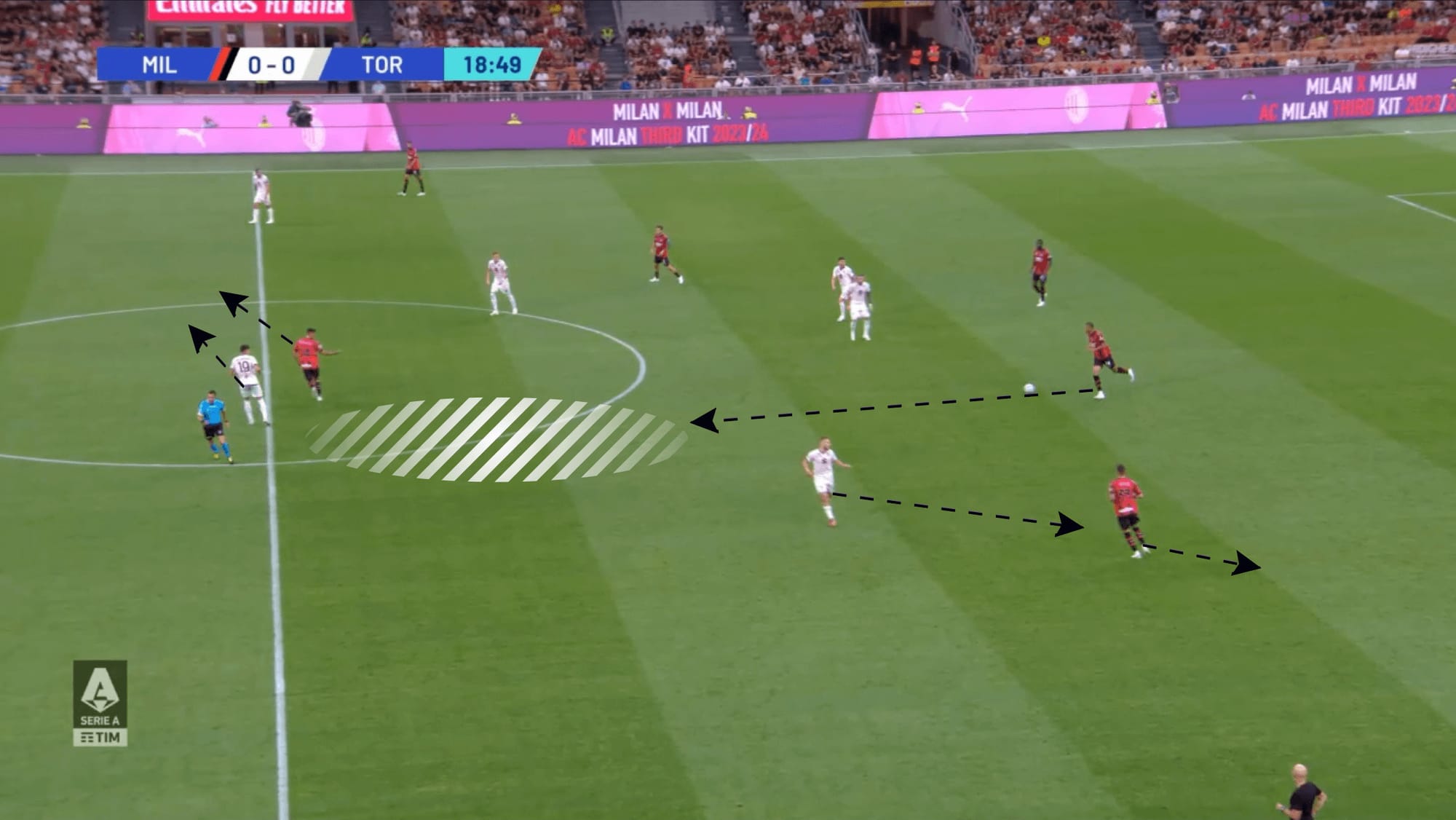
How will Inter set up defensively?
It is unlikely that Inter will decide to employ a full-man marking approach against Milan, such as Torino. However, due to the nature of the game and the fact that Inter will be at home, they will likely look to defend with high intensity.
Their Champions League semi-final clash against Milan Inter’s 5-3-2 turned into a 4-4-2 as it usually does when the side defends in more advanced areas. In their 4-4-2, Inter’s wing-backs adjust their positions to be able to press opposition full-backs, with either the right or left centre-back adjusting their positions to cover opposition wingers. This weekend, Inter may be slightly trickier to use the same method as they did in the semi-final due to Calabria inverting into the midfield more often and Loftus-Cheeks positioning in the right half-space. As a result, Federico Dimarco may be pinned back slightly by Loftus-Cheek’s positioning, potentially creating space for Milan’s right centre-back to carry the ball forward.
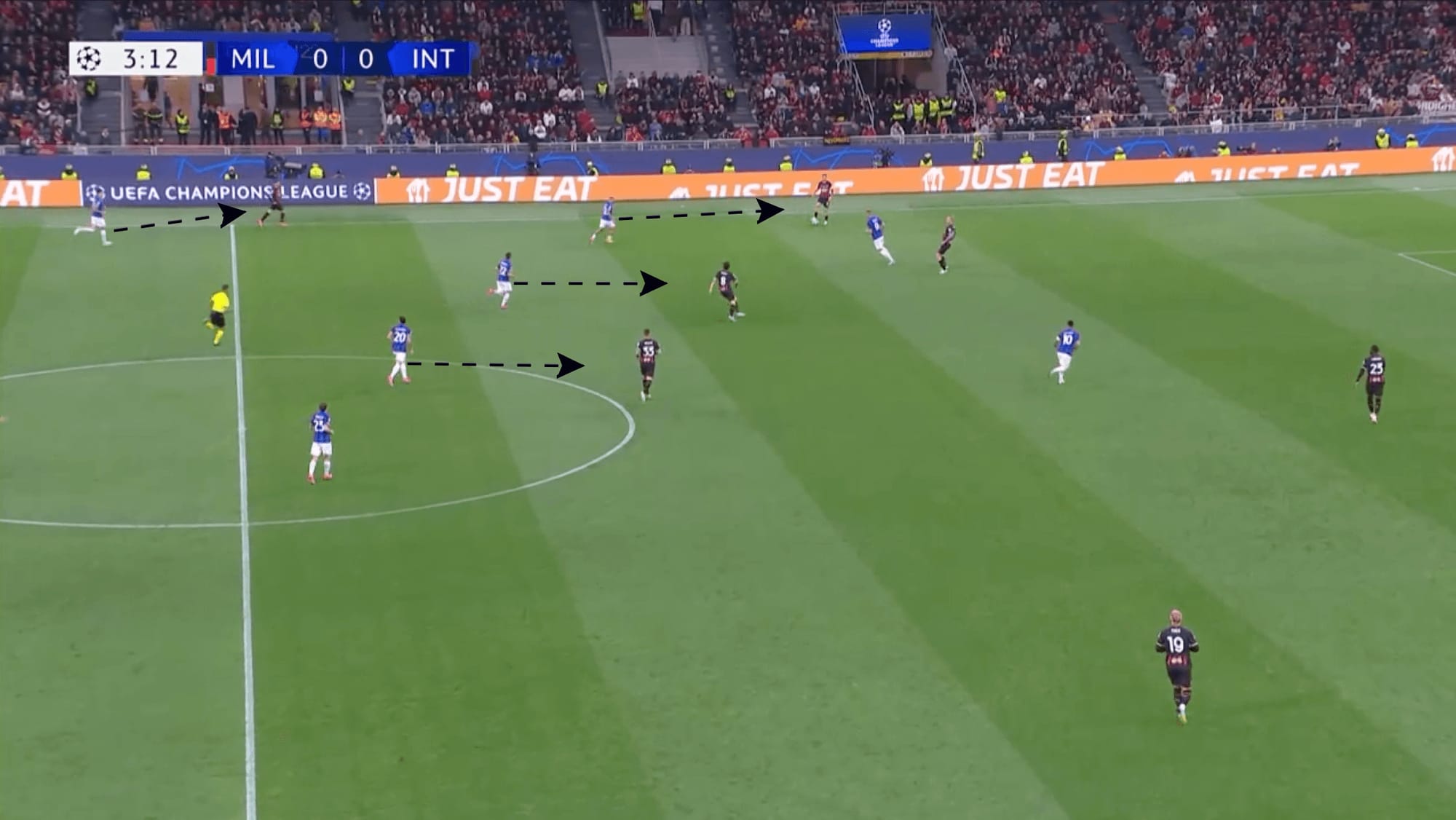
At some points this season, Dimarco has even joined the front three when advancing to cover the opposition full-back. He will unlikely be able to advance to this to the same extent on the weekend. Because of this, Milan may use the right-hand side more often than usual, as with the right centre-back carrying the ball forward, he will likely attract pressure from Inter players and release the ball to free teammates.
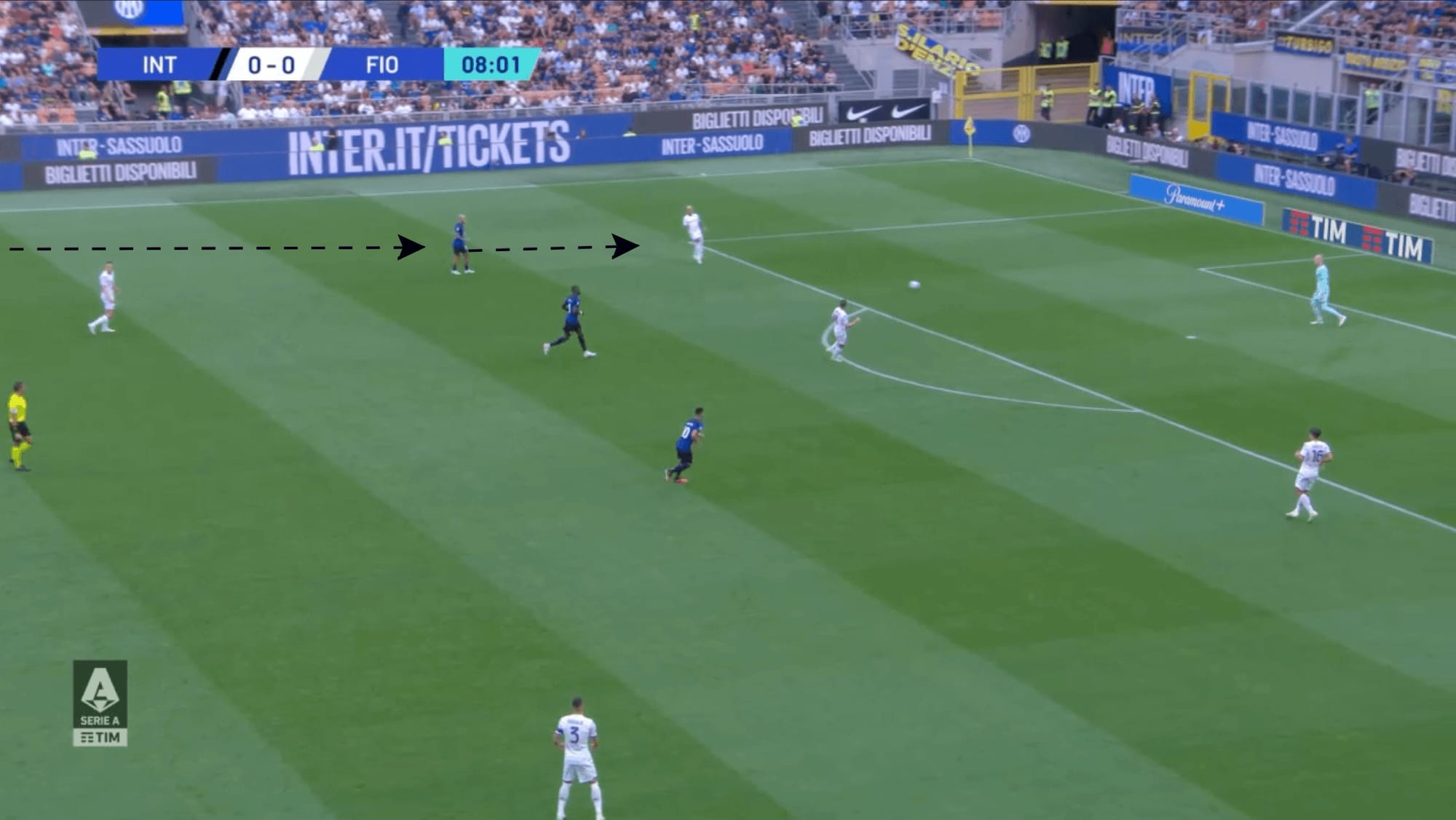
On the right-hand side, Dumfries and Barella will probably alternate in pressing Théo when the left-back is in deeper positions and a part of the back 3, depending on which one is closer to the Frenchmen.
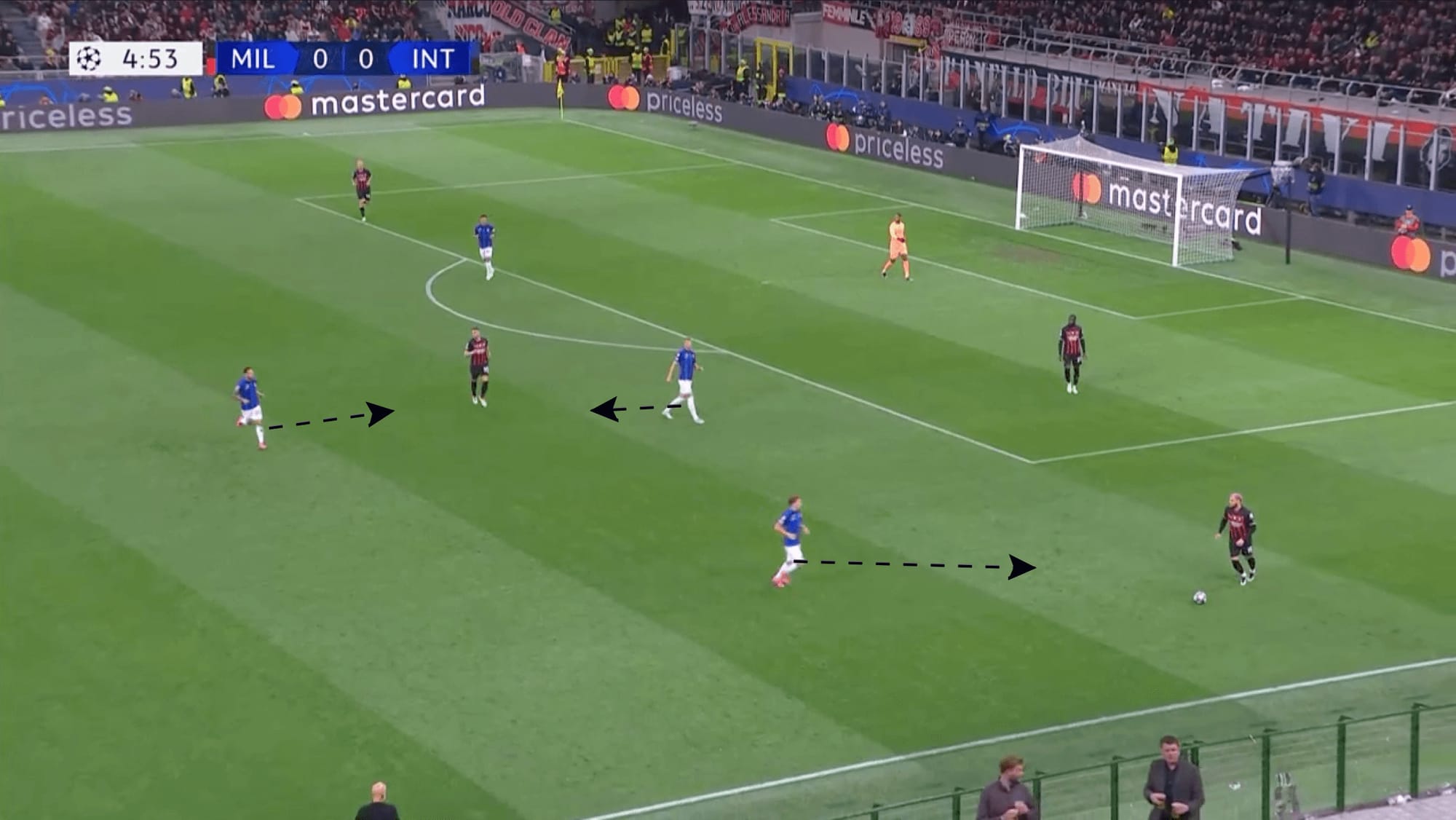
This dynamic between the two players occurred in the first leg of their semi-final tie. However, Leão was out injured in this particular game. Dumfries may be more reluctant to press théo at times as it would Leave Matteo Darmian in a 1v1 situation against Leão, which could be dangerous.
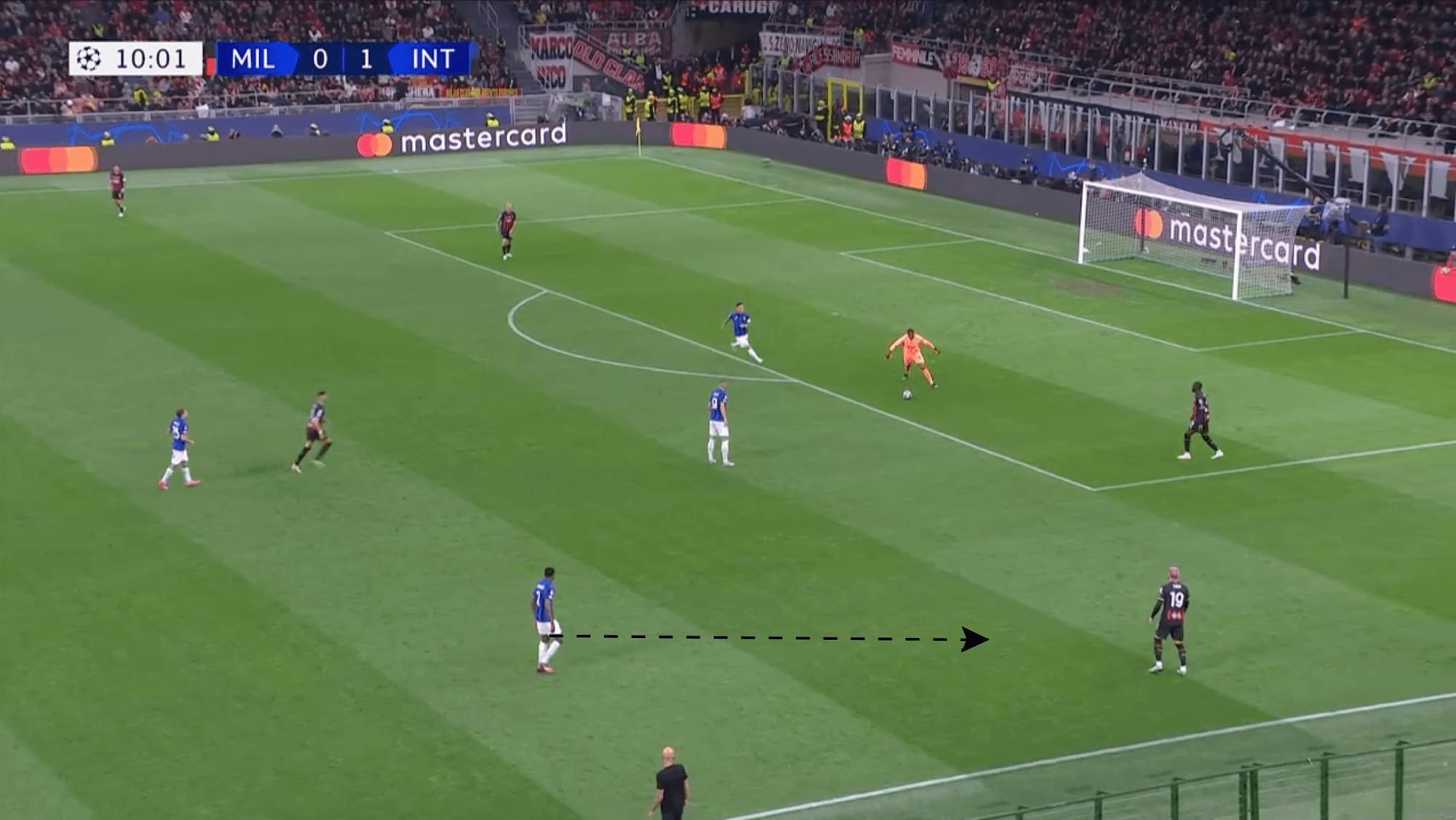
Additionally, unlike Roma’s forwards, Inter’s strikers are more cognisant of reducing the space between the first and second line of defence in higher areas, with their strikers shifting downwards to cover opposition midfielders. However, there are still lapses in concentration from the forwards in aiding their midfielders by covering players from the front and preventing passes directly to the opposition midfielders, such as in the image below.
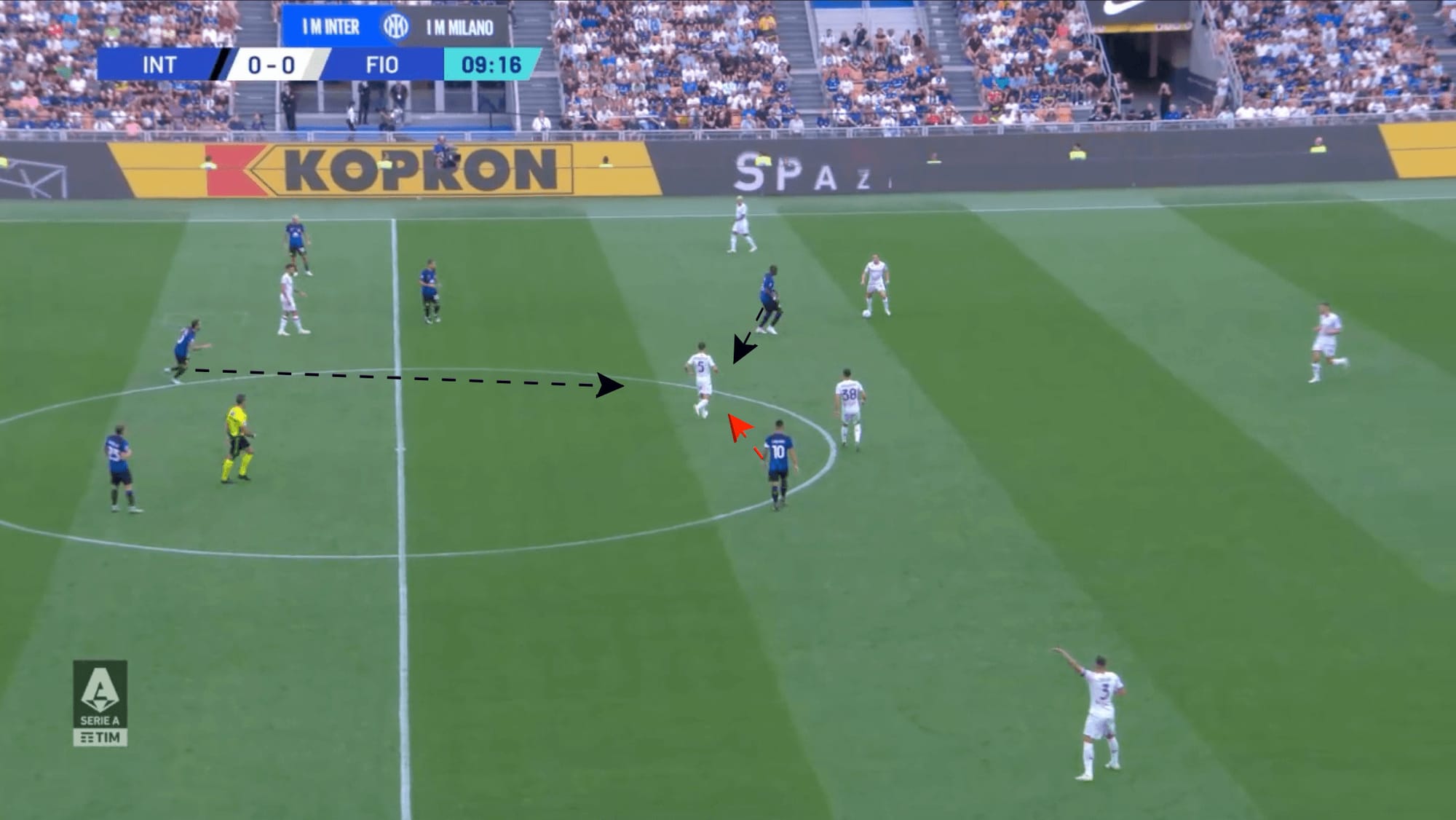
A lack of defensive work rate from the forward line will increase the midfielders’ workload, leading to reduced cover in the midfield line. With Milan’s flexibility in forming the back three and their midfield overload, the strikers must look to cover the spaces their midfielders leave when they press the opposition.
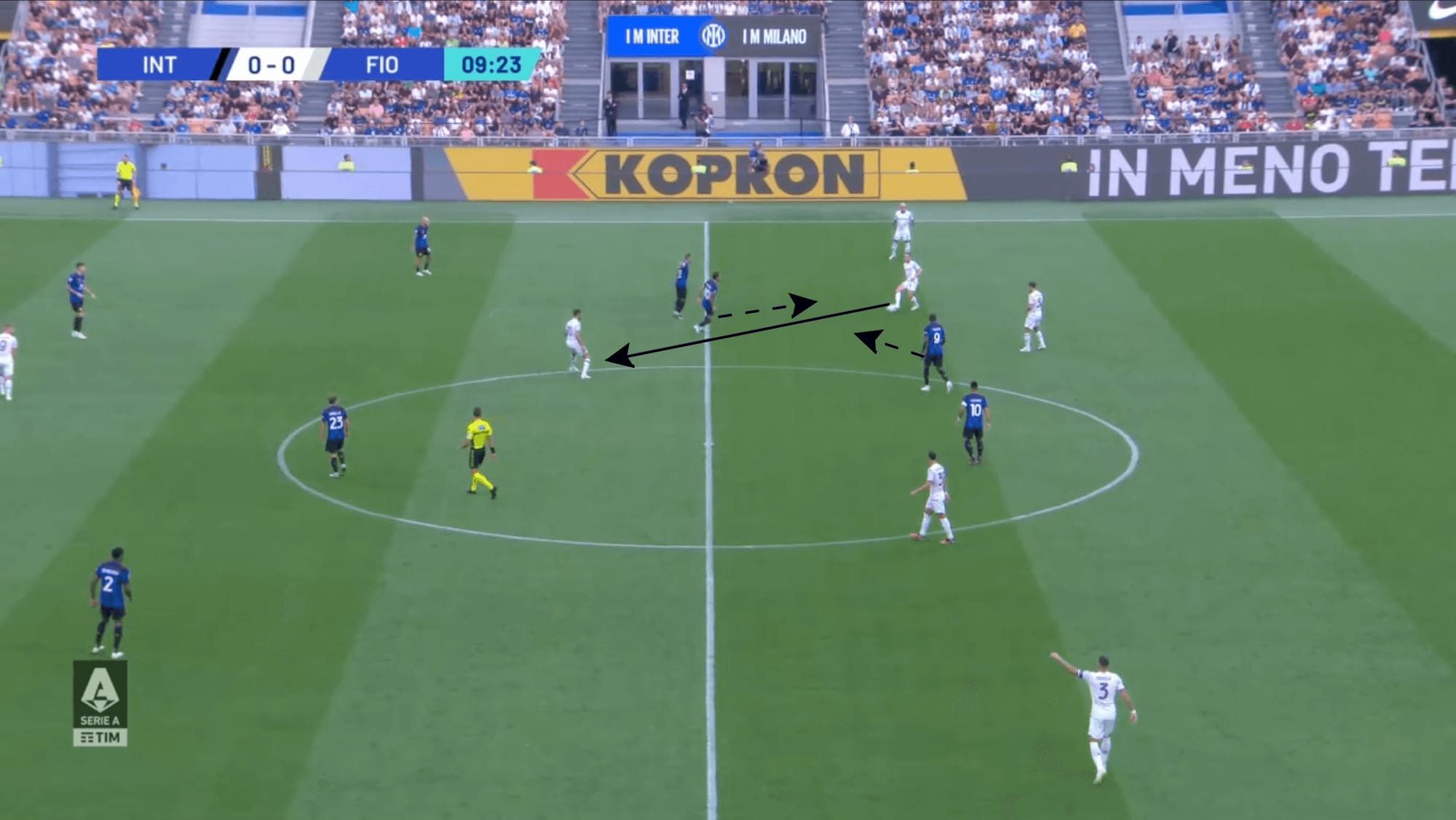
Inter’s forwards may, at times, have to refrain from pressing the centre-backs, especially when Milan are in a back three, as that may cause the distance between the first and second line to increase substantially, creating space for the likes of Krunić and Reijnders to drop into this space and provide support for players in the back 3.
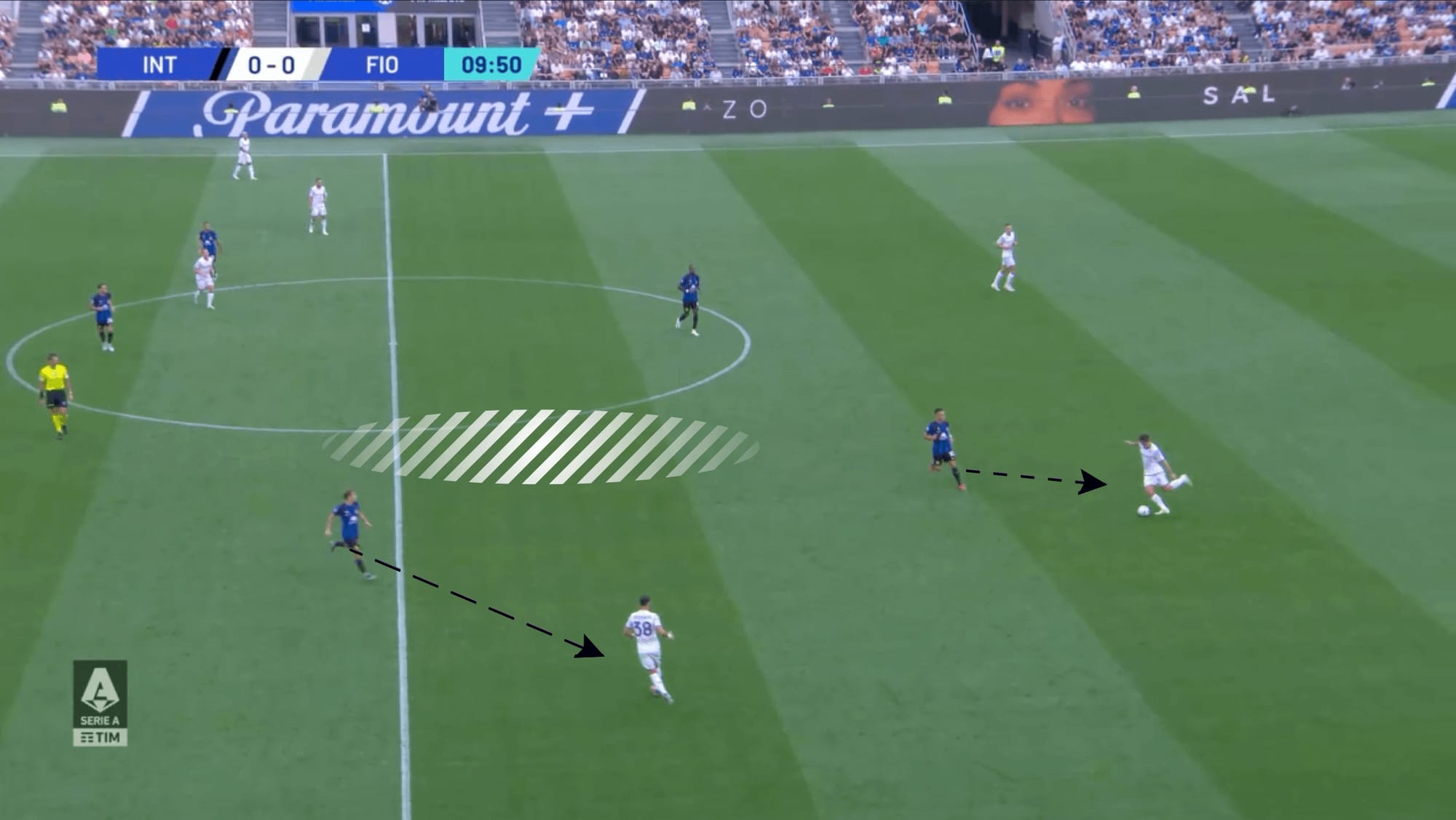
This is also significant from the perspective of Inter’s centre-backs, who play a prominent role in defending the gaps between the three midfielders by stepping out of the back line and covering players between the lines. As mentioned earlier, Milan look to progress the ball forward and exploit spaces in the back line with runners. If Inter cannot mitigate passes into the overloaded centre, Milan can lure defenders out of the back line and exploit the spaces.
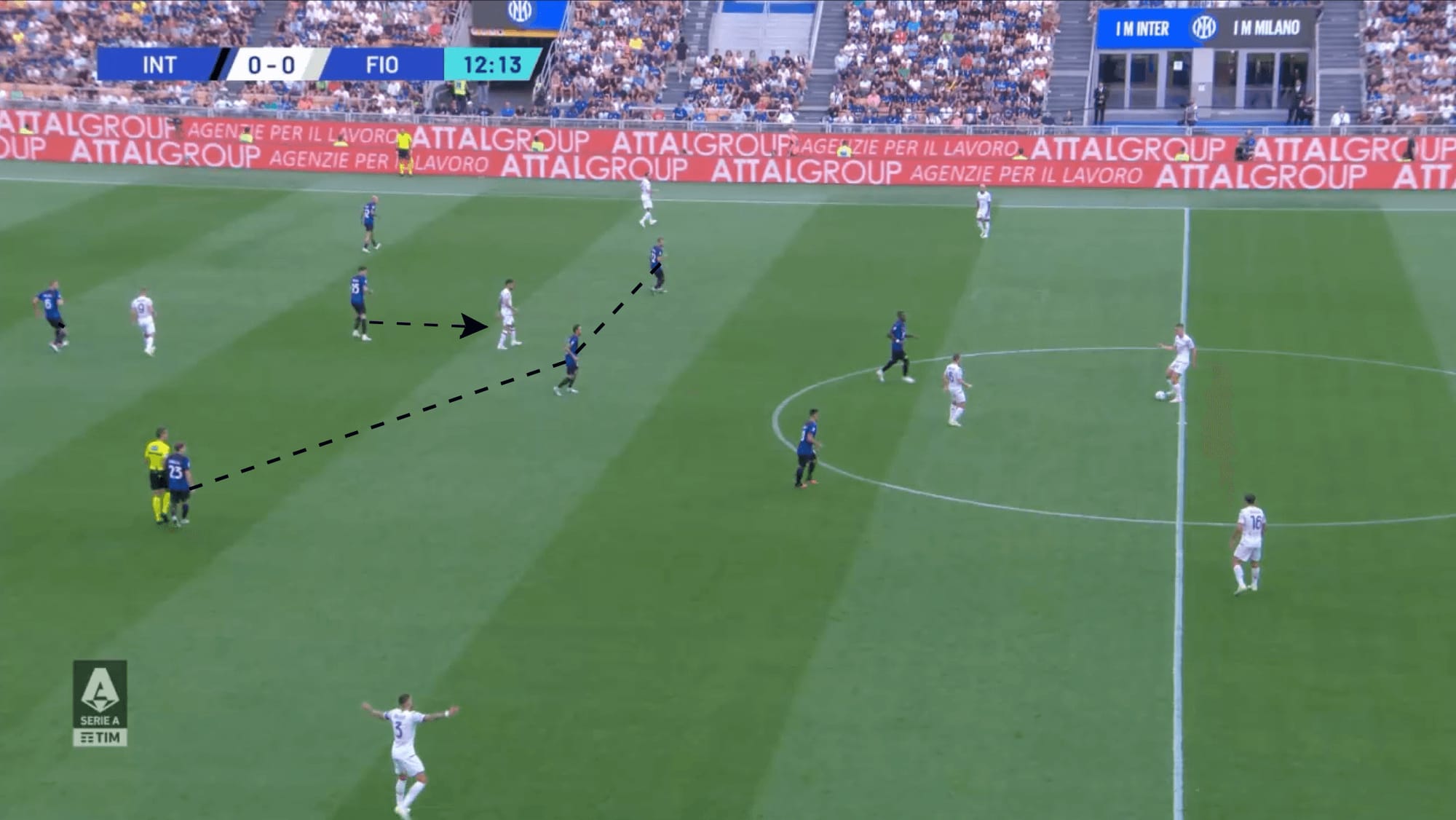
Conclusion
Predicting the outcome of derby games, with this match being no exception, is always tricky. As this tactical analysis has shown, the players in this Milan side have been well coached in creating space for one another and supporting each other in these spaces, which is difficult for any team to contend with.
This may require Inter to take a slightly reserved approach, especially when Runic drops to form a back three, despite the pressure that the home support may throw their way to be more aggressive. Both team’s principles in possession have the ability to disrupt the other’s defensive approach. As a result, it would be unsurprising for the match to end in a scored draw.





Comments